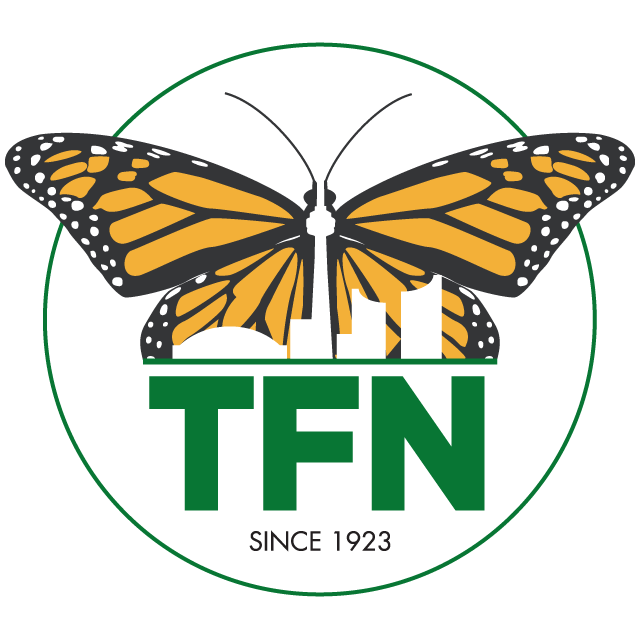The fourth annual Toronto Ravine Symposium was held on Thursday, October 10, 2019 at Toronto Botanical Garden. Like previous years, the event drew roughly 150 attendees, gathered together to discuss and celebrate these amazing natural spaces. Unlike previous years, the symposium was followed the next day by an Urban Tree Workshop led by symposium keynote speaker, Henry Hughes, from the Birmingham Botanical Gardens.
First thing in the morning, Henry Hughes delivered an inspiring and engaging presentation on the Centennial Trees of Birmingham, Alabama. From 2009-2014 some 1500 native tree seedlings were planted throughout metropolitan Birmingham, all of them descendants of the most venerable trees in the area (many 100+ years old). Species included scarlet oak, blackjack oak, northern and southern red oaks, southern sugar maple, American hornbeam, and tag alder, among others. A particular emphasis was put on planting species that were under-represented in the local horticultural trade. Hughes made several references to Eric Davies’ recent effort to collect and germinate acorns from the venerable oaks of Toronto’s ravines, and opportunities for Toronto to follow in Birmingham’s footsteps were not lost on the audience.
Following the keynote, attendees were treated to a series of 15 and 30 minute presentations by a variety of speakers. Alan Li discussed the evolution of the League of Urban Nature Artists and how taking time to sketch, rather than photograph, nature could inspire more intimate connections with our natural heritage. Toronto Botanical Garden updated everyone on their upcoming expansion. Melanie Sifton of the University of Toronto explored the interplay between the soil food web and ecological restoration efforts. Finally, just prior to lunch, Michael Mesure of FLAP Canada provided important information on protecting birds from building collisions.
Guided ravine and garden tours were offered to attendees after lunch. Hike leaders included the Toronto Field Naturalists’ very own Nancy Dengler and Peter Heinz (with Peter representing TBG that day). Participants returned to the symposium envigourated by the direct connection with Wilket Creek and the surrounding area that these hikes offered them.
The afternoon’s agenda began with a look at Jonas Hamberg’s (University of Waterloo) novel use of thermal imaging in ecological monitoring, the results of which surprised many in attendance as they suggest that native plant communities may produce a higher degree of cooling than those overrun by exotic and invasive species.
The day concluded with an hour and a half long interactive session led by Eric Davies, Catherine Berka, and TFN President, Jason Ramsay-Brown, which explored the possible benefits that a conservancy model might bring to Toronto’s ravines. Participants assembled themselves in to thematic groups (fundraising, science, NGOs, and the public-at-large) to discuss associated challenges and propose ways they felt a conservancy could help them directly address these issues. Results of their brainstorming were presented at the end of the session. Combined, points raised spoke to a general sense that biodiversity in our ravines was under critical threat from a variety of influences, and that progress might be made faster and more effectively by unlocking the vast potential offered by community participation in a productive partnership with the City, TRCA, and other stakeholders.
The Ravine Symposium is always an enlightening and enjoyable day, and this year’s was no exception.

